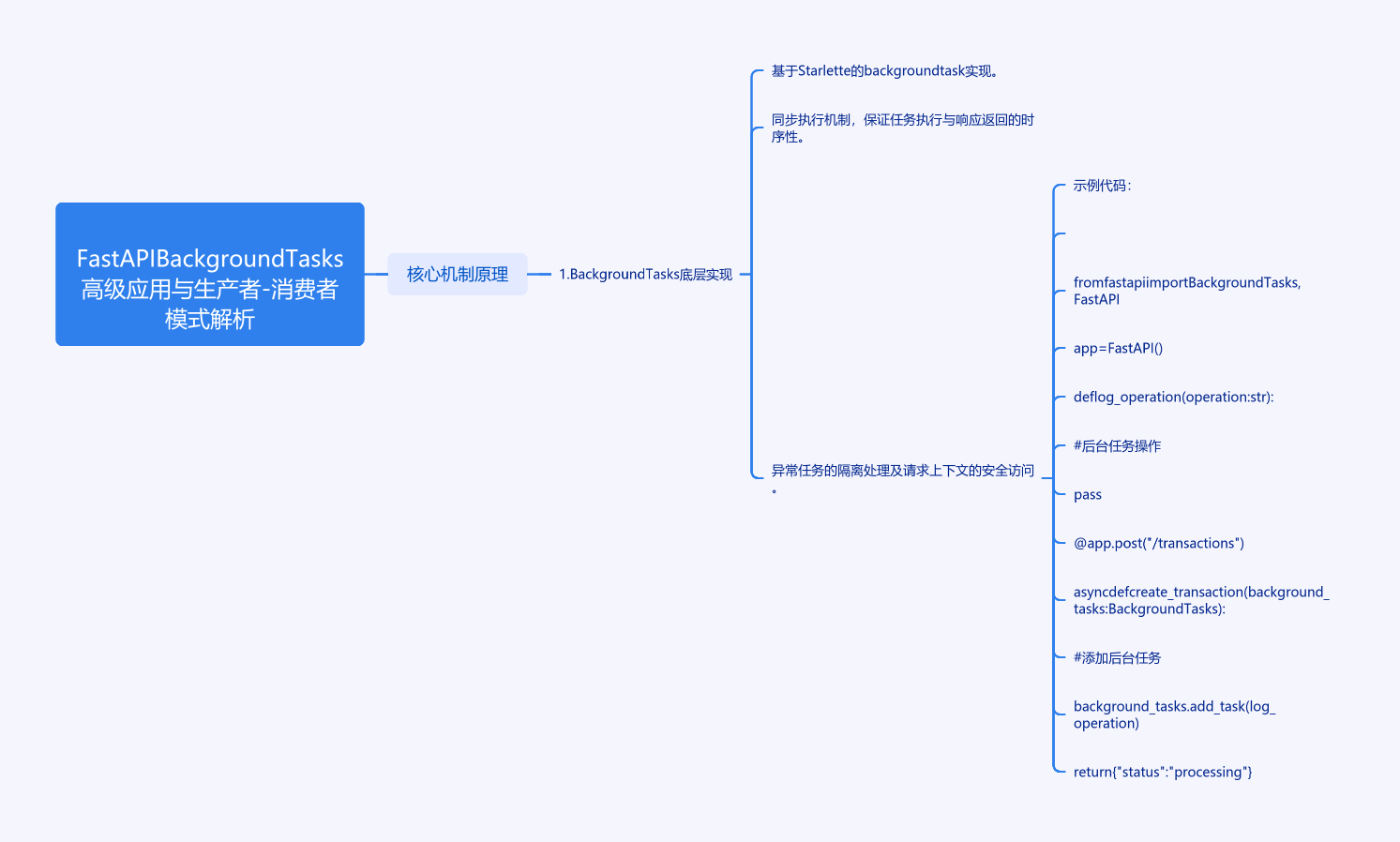FastAPI的BackgroundTasks如何玩转生产者-消费者模式?
url: /posts/1549a6bd7e47e7006e7ba8f52bcfe8eb/
title: FastAPI的BackgroundTasks如何玩转生产者-消费者模式?
date: 2025-08-07T23:55:48+08:00
lastmod: 2025-08-07T23:55:48+08:00
author: cmdragon
summary:
FastAPI 的 BackgroundTasks 基于 Starlette 实现,采用同步执行机制,确保任务执行与响应返回的时序性。当系统面临单节点处理瓶颈或需要任务顺序性时,可升级为生产者-消费者模式,使用 Redis/RabbitMQ 作为消息队列。通过 Celery 实现分布式任务处理,生产者将任务存入队列,消费者读取并处理任务,结果持久化存储。异常处理包括任务确认机制、死信队列和任务状态追踪,确保系统稳定性和任务可靠性。
categories:
- fastapi
tags:
- FastAPI
- BackgroundTasks
- 生产者-消费者模式
- 分布式任务处理
- Celery
- 异常处理
- 任务优先级


扫描二维码关注或者微信搜一搜:编程智域 前端至全栈交流与成长
发现1000+提升效率与开发的AI工具和实用程序:https://tools.cmdragon.cn/
核心机制原理
1. BackgroundTasks 底层实现
FastAPI 的 BackgroundTasks 基于 Starlette 的 background task 实现,采用同步执行机制。当请求处理完成后,框架会顺序执行注册的后台任务。这种设计保证了:
- 任务执行与响应返回的时序性
- 异常任务的隔离处理
- 请求上下文的安全访问
from fastapi import BackgroundTasks, FastAPIapp = FastAPI()def log_operation(operation: str):with open("audit.log", "a") as f:f.write(f"{datetime.now()} - {operation}\n")@app.post("/transactions")
async def create_transaction(task: TransactionSchema,background_tasks: BackgroundTasks
):background_tasks.add_task(log_operation, f"New transaction {task.id}")return {"status": "processing"}
2. 生产者-消费者模式演进
当系统面临以下场景时需升级架构:
- 单节点任务处理能力达到瓶颈
- 需要保证任务执行的顺序性
- 要求任务执行结果的可追溯性
